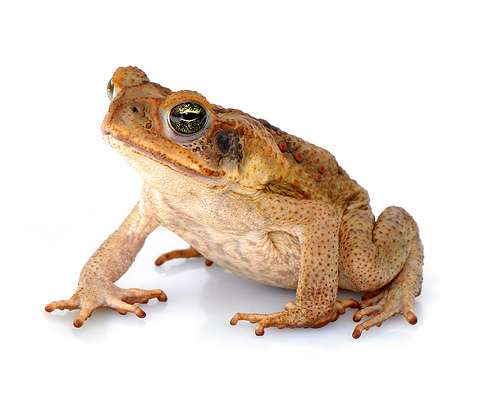February 26, 2014 report
Cane toads demonstrating impressive adaptive abilities in Western Australia

Cane toads have over the past 85 years become a problem in Australia. Originally native to South America, some of the toads were captured and turned loose in the 1930's in Australian sugar cane fields with the hope of helping to reduce cane beetles. Since that time, they have reproduced to the point of becoming a nuisance (and in some cases endangering the survival of other species) and have spread to other parts of the country, most recently, into the west. As the problem has grown, scientists have looked to curb toad populations and in so doing have recently learned of some of the impressive ways the toads have adapted for survival in their adopted homeland.
One study, for example, carried out by researchers from several universities in Australia, has found that the toads have developed a diurnal pattern of rehydration to prevent dehydration during high temperature days. They've published their findings in the journal Biology Letters.
In their study, the researchers wondered how it was possible that the toads were surviving in parts of Australia that should be too hot for them. Toads keep cool by expiring water (which they normally replenish at nigh), but the excessive temperatures in western parts of Australia would dehydrate and kill the toads, or so it would seem, before they could rehydrate.
To find out what was going on, the researchers attached acoustic tags to several specimens and installed an underwater listening station in a section of lake formed by a dam that the toads were known to use as a watering place. Analysis of the data showed that the toads had changed their normal hydration patterns—they were climbing out of their shelters and drinking twice a day—once at night and once in broad daylight—instead of the normal once a night. This, the researchers note is a rare example of extreme plasticity in a behavioral trait of an animal—one that allows them to survive in an extremely hostile environment.
On another front, amateur researchers who have formed a group (Kimberley Toad Busters) with the aim of curbing the spread of the toads have found that the amphibians widen their territory by taking advantage of floods. Several examples of toads riding flood debris downstream have been observed (and photographed) offering an explanation of how the toads are able to make their way into areas that have been protected by screening devices—yet another example of the toads' impressive survival skills.
More information: Biol. Lett. February 2014 vol. 10 no. 2 20131014 DOI: 10.1098/rsbl.2013.1014
Journal information: Biology Letters
© 2014 Phys.org




















